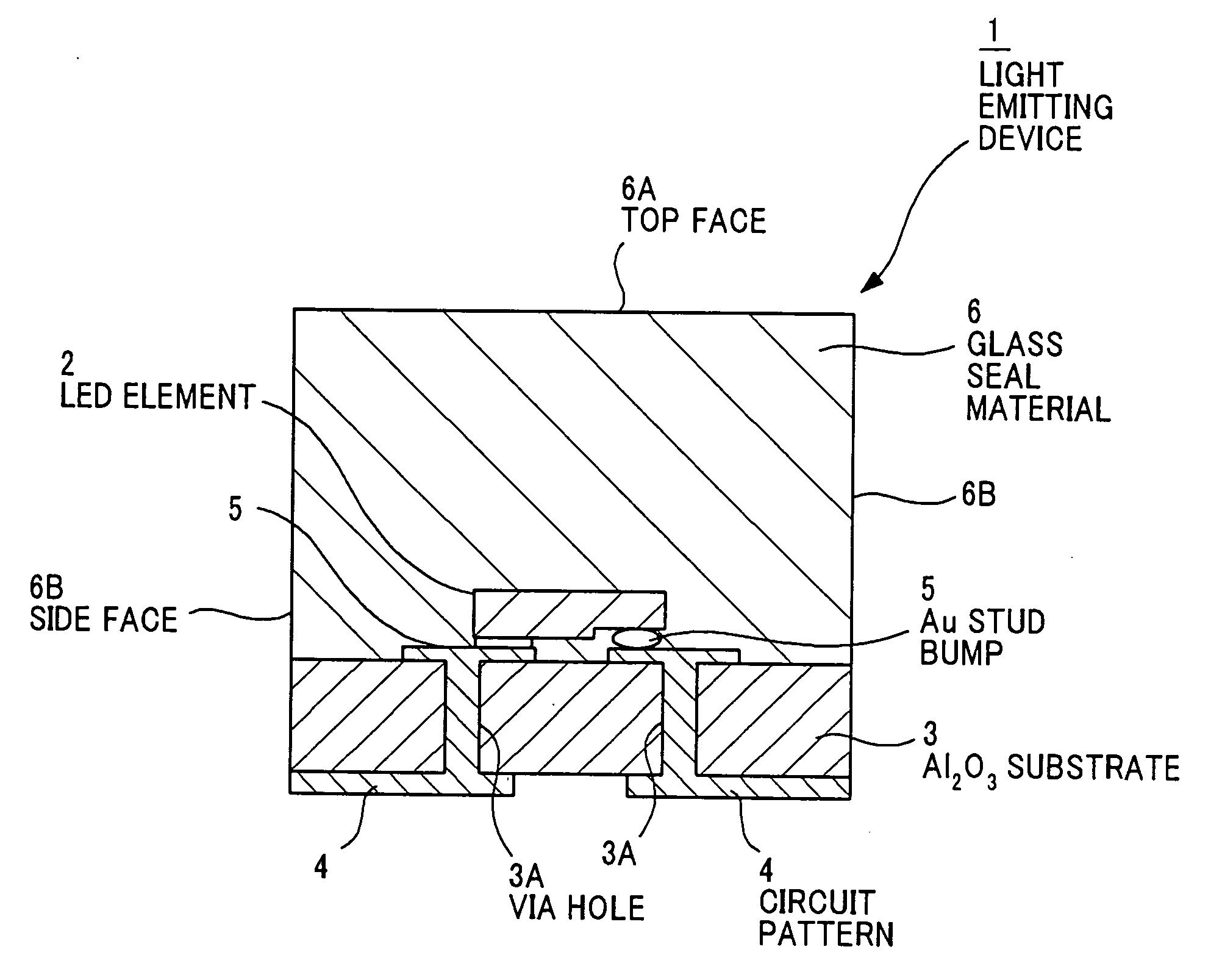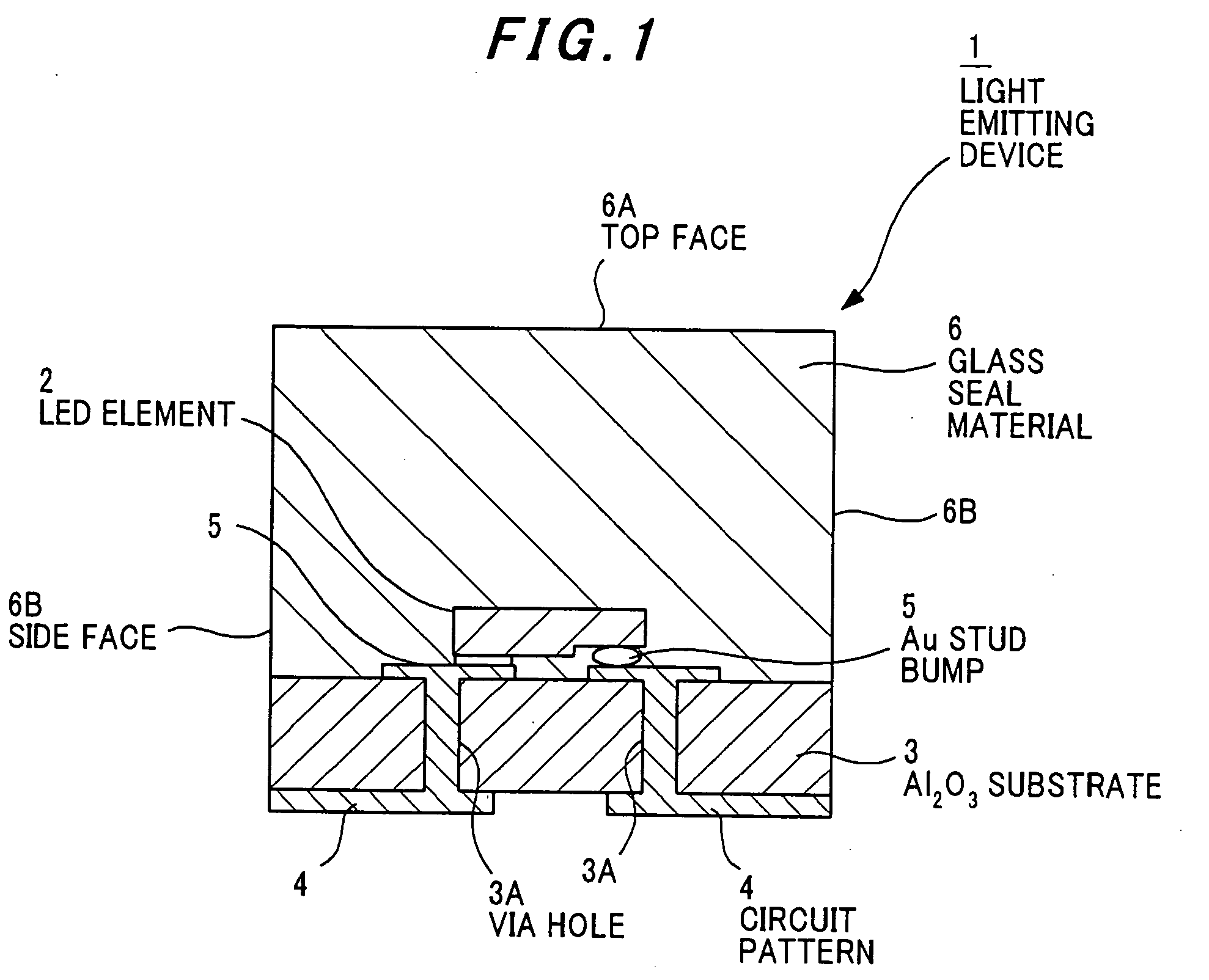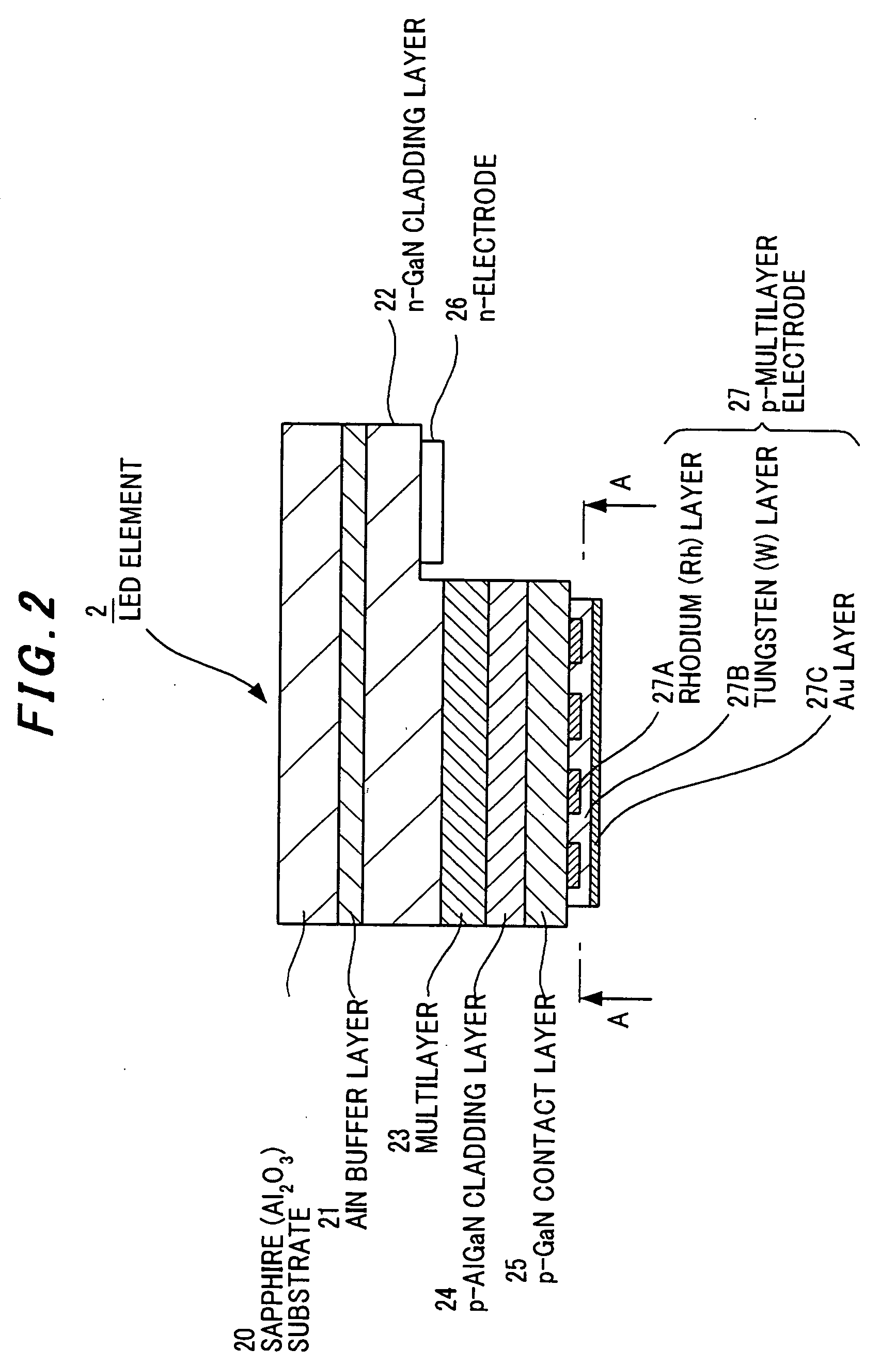Solid-state element and solid-state element device
a solid-state element and element technology, applied in the direction of radiation controlled devices, semiconductor devices, electrical apparatus, etc., can solve the problems of electrode layer being separated (peeled) from the semiconductor layer, reducing emission efficiency,
- Summary
- Abstract
- Description
- Claims
- Application Information
AI Technical Summary
Benefits of technology
Problems solved by technology
Method used
Image
Examples
first embodiment
(Composition of Light Emitting Device 1)
[0076]FIG. 1 is a cross sectional view showing a light emitting device as a solid-state element device in the first preferred embodiment according to the invention.
[0077] The light emitting device 1 is composed of: a flip-chip type LED element 2 as a solid-state element that is of GaN based semiconductor; an Al2O3 substrate 3 on which the LED element 2 is mounted; a circuit pattern 4 that is composed of tungsten (W) / nickel (Ni) / gold (Au) and is formed on the Al2O3 substrate 3; an Au stud bump 5 that is formed as a joint portion to connect between the LED element 2 and the circuit pattern 4; and a glass seal material 6 that seals the LED element 2 and is bonded to the Al2O3 substrate 3.
[0078] The Al2O3 substrate 3 is provided with a via hole 3A to electrically connect between the circuit patterns 4 that are of W—Ni and metallized at the front surface and back surface of the substrate 3.
[0079] The glass seal material 6 is of low-melting gla...
second embodiment
(Composition of LED Element 2)
[0096]FIG. 4 is a cross sectional view showing an LED element in the second preferred embodiment according to the invention.
[0097] The LED element 2 of the second embodiment is different from the first embodiment in that a GaN substrate 28 (with a refractive index of n=2.4) is used in place of the sapphire substrate 20 and a Bi based high-refractive index glass with a refractive index of 1.85 is used. The GaN substrate 28 is provided with a slope 28A formed by removing the corner portion by cutting or polishing etc. In this embodiment, like parts are indicated by the same numerals as used in the first embodiment.
(Effects of the Second Embodiment)
[0098] In the second embodiment, adding to the effects of the first embodiment, due to using the GaN substrate 28, the light generated in the multilayer 23 can reach the interface between the GaN substrate 28 and the glass seal material (not shown in FIG. 4) without having an optical loss. Further, since t...
third embodiment
(Composition of LED Element 2)
[0103]FIG. 6A is a cross sectional view showing an LED element in the third preferred embodiment according to the invention. FIG. 6B is a top view showing the LED element in FIG. 6A viewed from a position B in FIG. 6A.
[0104] The LED element 2 is composed of the GaN substrate 28 with the groove 22a formed by cutting on the light discharge surface as explained in FIG. 5A, and the p-multiplayer electrode 27 with the tungsten (W) layer 27B lattice-patterned.
(Effects of the Third Embodiment)
[0105] In the third embodiment, due to the lattice-patterned tungsten (w) layer 27B, the separation of the electrode layer can be prevented. In addition, the p-GaN has a high resistivity, which allows the formation of an emission area according to the pattern of ohmic electrodes, and the uneven surface is formed according to the emission area. Therefore, the light discharge characteristic from the GaN based semiconductor layer can be enhanced.
PUM
 Login to View More
Login to View More Abstract
Description
Claims
Application Information
 Login to View More
Login to View More - R&D
- Intellectual Property
- Life Sciences
- Materials
- Tech Scout
- Unparalleled Data Quality
- Higher Quality Content
- 60% Fewer Hallucinations
Browse by: Latest US Patents, China's latest patents, Technical Efficacy Thesaurus, Application Domain, Technology Topic, Popular Technical Reports.
© 2025 PatSnap. All rights reserved.Legal|Privacy policy|Modern Slavery Act Transparency Statement|Sitemap|About US| Contact US: help@patsnap.com



